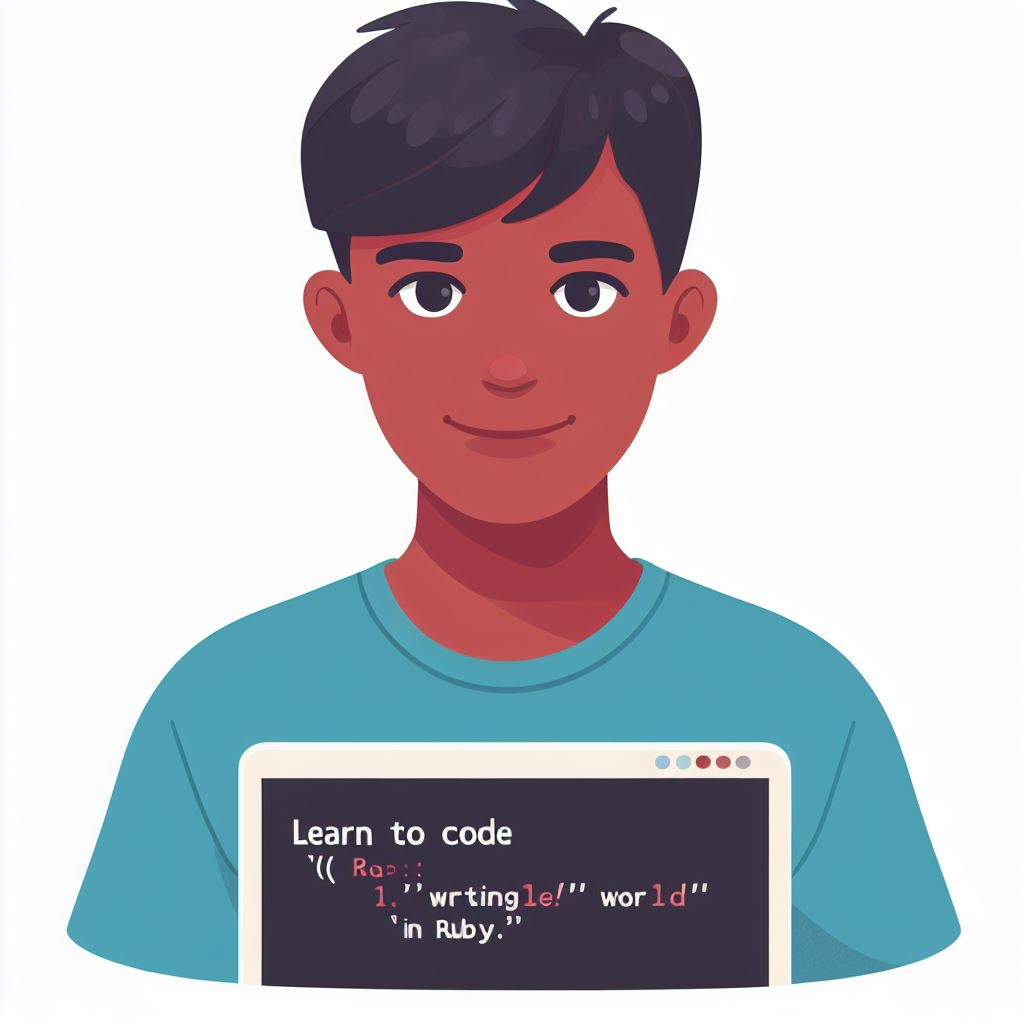Introduction
Integrating coding robots into your homeschool curriculum is a modern and innovative approach to education.
By combining coding and robotics, students can develop essential skills while engaging in hands-on learning experiences.
Importance of integrating coding robots into homeschool curriculum
Integrating coding robots into homeschool curriculum is important as it enhances student engagement and promotes critical thinking.
It also helps students develop problem-solving skills and nurtures creativity and innovation.
Briefly explain the benefits for students
Integrating coding robots into homeschool curriculum offers numerous benefits for students.
Firstly, it enhances their understanding of programming concepts in a practical and interactive way.
Secondly, it improves their ability to work collaboratively and enhances communication skills.
Moreover, coding robots enable students to apply their knowledge to real-world scenarios, making learning meaningful and relevant.
Furthermore, coding robots provide students with opportunities to develop important 21st-century skills such as computational thinking, logical reasoning, and digital literacy.
They also promote perseverance and resilience as students troubleshoot and debug their coding algorithms.
By using coding robots, students become active learners and take ownership of their education, leading to increased motivation and engagement.
Basically, integrating coding robots into your homeschool curriculum is a powerful tool for fostering a lifelong love for learning and preparing students for future careers in STEM fields.
This innovative approach provides students with a solid foundation in coding and robotics while developing crucial skills needed for success in the 21st century.
Understanding coding robots
- Coding robots are educational tools that help children learn coding and programming concepts.
- They are designed to be interactive and engaging, making learning fun and hands-on.
- Coding robots come in various shapes, sizes, and levels of complexity.
- They can be used by children of all ages, from preschoolers to high school students.
- Coding robots encourage critical thinking, problem-solving skills, and creativity in children.
- They provide a practical way for children to apply their coding knowledge and see real-life results.
Definition of coding robots
- Coding robots are programmable robots that can be controlled using coding instructions.
- They can perform various tasks and actions based on the code provided by the user.
- These robots can move, follow a line, avoid obstacles, make sounds, light up, and more.
- They have built-in sensors and actuators that enable them to interact with their environment.
- Coding robots typically have a user-friendly interface and software that simplifies the coding process.
Types of coding robots available
- Entry-level coding robots: These robots are designed for young children and beginners in coding. They usually have a simple interface and provide basic coding functionalities.
- Advanced coding robots: These robots are more complex and offer advanced coding features. They can be programmed using block-based coding languages or even text-based languages.
- Virtual coding robots: These robots exist in the digital realm and can be programmed using coding software. They offer a virtual environment for children to practice coding and see immediate feedback.
Popular coding robots in the market
- LEGO Mindstorms: This popular coding robot offers endless possibilities for building and programming.
- Sphero: Known for its app-enabled robotic balls, Sphero robots provide a creative coding experience.
- Ozobot: These small, pocket-sized robots introduce coding through color-based programming.
- Dash and Dot: These friendly robots teach coding through interactive games and challenges.
- Cubetto: Designed for young children, Cubetto uses a wooden robot and a coding board to teach coding basics.
- Cozmo: An AI-powered coding robot that can recognize faces, play games, and interact with its environment.
Essentially, coding robots offer a unique and effective way to integrate coding education into homeschool curriculum.
Whether you choose an entry-level robot or a more advanced one, these robots provide hands-on learning experiences that engage and inspire children.
Tech Consulting Tailored to Your Coding Journey
Get expert guidance in coding with a personalized consultation. Receive unique, actionable insights delivered in 1-3 business days.
Get StartedWith a wide range of coding robots available in the market, homeschoolers have the opportunity to choose the one that best suits their child’s interests and learning goals.
Read: Navigating the Salary Landscape for Entry-Level Coders
Benefits of integrating coding robots into the homeschool curriculum
The integration of coding robots into your homeschool curriculum offers numerous benefits:
Enhancing Problem-Solving and Critical Thinking Skills
- Allowing students to identify and analyze problems to find innovative solutions.
- Teaching them how to break down complex problems into smaller, manageable tasks.
- Promoting logical reasoning and systematic thinking for effective decision-making.
Developing Computational Thinking Abilities
- Introducing students to the fundamental concepts of coding and algorithms.
- Teaching them how to think step-by-step and predict outcomes.
- Building their ability to understand patterns and create efficient processes.
Encouraging Creativity and Innovation
- Providing a platform for students to experiment and explore their ideas.
- Allowing them to design and program their own unique robots.
- Fostering a creative mindset and out-of-the-box thinking.
Fostering Collaboration and Teamwork
- Promoting cooperation and communication skills among students.
- Encouraging them to work together to solve coding challenges and troubleshoot.
- Teaching them how to delegate tasks, share ideas, and respect differing viewpoints.
Preparing Students for Future Careers in Technology
- Equipping students with the necessary skills for the digital age.
- Introducing them to coding languages and technologies used in the industry.
- Creating a foundation for potential careers in computer programming, engineering, or robotics.
In eseence, integrating coding robots into your homeschool curriculum offers significant advantages for your child’s development:
- They enhance problem-solving and critical thinking skills.
- Students develop computational thinking abilities.
- Encourages creativity and innovation among students.
- Fosters collaboration and teamwork.
- Prepares students for future careers in technology.
By incorporating coding robots into your homeschooling, you can provide your child with a solid foundation in coding and technology skills, preparing them for a successful future in any field they choose.
Read: Advanced Projects: Take Your Coding Robot to the Next Level
Integrating Coding Robots into Your Homeschool Curriculum
Homeschooling offers numerous advantages, such as personalized learning and flexibility in curriculum design.
To enhance these benefits, integrating coding robots into your homeschool curriculum can be an excellent addition.
Coding robots provide hands-on experience, boosting critical thinking, problem-solving, and creativity skills.
This blog section will explore the benefits of integrating coding robots into your homeschool curriculum, identifying suitable coding robots, and incorporating them into different subjects.
Identifying Suitable Coding Robots for Your Curriculum
When choosing coding robots, consider their compatibility with your curriculum objectives and your children’s age and skill level.
Popular coding robots include Dash and Dot, LEGO Mindstorms, Bee-Bot, and Ozobot.
These robots provide a wide range of programming capabilities suitable for different levels of complexity.
Integrating Coding Robots into Different Subjects
- Mathematics: Coding robots can be used to teach algorithms and logical reasoning skills. Students can write code to navigate the robot through a maze or solve mathematical puzzles.
- Science: Coding robots enable students to conduct experiments and analyze data. They can program the robots to monitor temperature, light, or sound levels, fostering scientific inquiry and data analysis skills.
- Language Arts: Coding robots offer opportunities for storytelling and writing code. Students can create narratives and program the robots to act out different scenes, enhancing both coding and communication skills.
- Social Studies: Coding robots can simulate historical events, bringing history to life. Students can program the robots to recreate famous battles or reenact historical figures, promoting a deeper understanding of past events.
Incorporating Coding Robots into Project-Based Learning Activities
Project-based learning is an effective way to engage students and foster independent learning.
Build Your Vision, Perfectly Tailored
Get a custom-built website or application that matches your vision and needs. Stand out from the crowd with a solution designed just for you—professional, scalable, and seamless.
Get StartedBy incorporating coding robots into project-based activities, students can apply coding skills to real-world problems.
For example, they can program a robot to clean up a simulated polluted environment, encouraging environmental awareness.
Encouraging Independent Exploration and Experimentation
Coding robots provide opportunities for independent exploration and experimentation.
Students can explore different coding concepts, trial and error, and learn from their mistakes.
This fosters resilience, creativity, and self-directed learning.
In short, integrating coding robots into your homeschool curriculum has numerous benefits.
By identifying suitable coding robots and incorporating them into various subjects, you can enhance your child’s critical thinking, problem-solving, and creativity skills.
Additionally, project-based learning activities and independent exploration promote a deeper understanding of concepts and encourage a love for learning.
So why not bring coding robots into your homeschooling journey and watch your child’s skills soar!
Read: 5 Essential Skills Needed for Entry-Level Coding Jobs

Resources and tools for coding robot integration in homeschooling
Coding robots have become increasingly popular in homeschooling as they offer a hands-on and interactive way for students to learn essential coding skills.
With the abundance of resources and tools available, integrating coding robots into your homeschool curriculum has never been easier.
In this section, we will explore the various resources and tools that can enhance coding robot integration in your homeschooling journey.
Resources and tools for coding robot integration in homeschooling
- Coding robot kits: These kits include a programmable robot along with various accessories and components that can be used to complete coding challenges.
- Coding cards: These cards provide step-by-step instructions for programming the robot to perform specific actions, making it easier for beginners to understand coding concepts.
- Coding apps: Many coding robots come with companion apps that allow students to control the robot, create their own programs, and explore additional coding challenges.
- Sensors and add-ons: Some coding robots come with sensors and add-ons that enable students to expand their coding projects and explore new possibilities.
Online platforms and coding software
- Online coding platforms: Websites like Scratch and Tynker offer interactive coding environments where students can create programs and control robots remotely.
- Robot-specific coding software: Many coding robots have their own dedicated coding software that provides a user-friendly interface for programming the robot.
- Virtual simulations: Some coding robots offer virtual simulations that allow students to experiment with coding concepts before applying them to the physical robot.
Community forums and support networks
- Online communities: Joining online communities dedicated to coding robots can provide valuable support and a platform for sharing ideas and resources.
- Social media groups: Connecting with like-minded homeschoolers and educators on social media platforms can foster collaboration and provide a space for discussions related to coding robots.
- Local meetups and events: Attend local meetups and events focused on coding robots to connect with other homeschooling families and gain first-hand knowledge and experiences.
Coding curriculum and lesson plans
- Pre-designed curriculum: Many educational companies offer coding curriculum specifically designed for homeschooling, incorporating coding robots into various subjects such as STEM, math, and science.
- Lesson plans and activities: Numerous websites provide free lesson plans, activities, and project ideas that integrate coding robots into different subject areas, allowing for a well-rounded and engaging learning experience.
Educational websites and resources
- Online tutorials and guides: Many websites offer step-by-step tutorials and guides that walk students through the process of programming a coding robot, making it easier to grasp coding concepts.
- Video tutorials: Watching video tutorials can be a helpful way for visual learners to understand how to code robots and complete specific tasks.
- Coding challenges and competitions: Participating in coding challenges and competitions hosted by educational websites can motivate students and provide opportunities for them to showcase their coding skills.
Incorporating coding robots into your homeschool curriculum can revolutionize the way your child learns coding.
Optimize Your Profile, Get Noticed
Make your resume and LinkedIn stand out to employers with a profile that highlights your technical skills and project experience. Elevate your career with a polished and professional presence.
Get NoticedWith the abundance of resources, online platforms, community support, coding curriculum, and educational websites available, the possibilities are endless.
By embracing this technology, you will be providing your child with a valuable skill set that will benefit them now and in the future.
So why wait? Start integrating coding robots into your homeschooling journey today!
Read: Coding Robots for Adults: It’s Never Too Late to Start!
Tips for successful integration
When it comes to integrating coding robots into your homeschool curriculum, there are several key factors to consider for a successful experience.
By following the tips outlined below, you can ensure that your students get the most out of this innovative learning tool.
Setting clear objectives and goals
Before incorporating coding robots into your homeschool curriculum, it is essential to establish clear objectives and goals.
Determine what you want your students to achieve through this integration, whether it is improving their problem-solving skills or fostering creativity.
When you have specific objectives in mind, you can tailor your lessons to target those goals effectively.
This approach helps students understand the purpose behind the activities and motivates them to engage actively in their learning.
Adapting curriculum to students’ skill levels
Every student has unique abilities and skill levels, so it is crucial to adapt the curriculum accordingly.
Begin by assessing your students’ current coding knowledge and abilities.
This evaluation will enable you to determine where to start and how to progress with the coding robots.
For beginners, start with basic programming concepts and gradually increase the complexity as their proficiency improves.
Advanced students, on the other hand, might benefit from more challenging coding tasks that push their boundaries and expand their skills.
Providing opportunities for hands-on experimentation
Coding robots are designed to offer hands-on learning experiences, so make the most of this feature by providing ample opportunities for your students to experiment and explore.
Encourage them to manipulate the robots, test different coding sequences, and observe the outcomes.
By engaging in hands-on experimentation, students can deepen their understanding of coding concepts and develop problem-solving skills.
They learn through trial and error, discovering what works and what doesn’t, fostering a growth mindset and resilience.
Balancing screen time with other learning activities
While coding robots require the use of screens for programming, it is essential to strike a balance with other learning activities.
Excessive screen time can be detrimental to students’ overall well-being and development.
Integrate offline activities to complement the coding robot lessons.
Encourage physical exercises, creative projects, and reading to provide a holistic learning experience.
This balance ensures students engage in diverse activities and maintain a healthy lifestyle.
Encouraging students’ creativity and problem-solving
Coding robots offer an excellent platform for nurturing students’ creativity and problem-solving abilities.
Encourage your students to think outside the box and come up with innovative solutions to coding challenges.
Provide opportunities for them to design and personalize their robots, using their coding skills to make unique creations.
This fosters creativity while reinforcing coding concepts and techniques.
Additionally, present challenges and puzzles that require students to think critically and apply problem-solving strategies.
This approach enhances their analytical thinking skills and prepares them to tackle real-world problems.
In essence, integrating coding robots into your homeschool curriculum can greatly enhance your students’ learning experience.
By setting clear objectives, adapting the curriculum, providing hands-on experimentation, balancing screen time, and encouraging creativity and problem-solving, you can ensure the successful integration of coding robots into your homeschooling routine.
Conclusion
Integrating coding robots into your homeschool curriculum is a valuable decision.
By incorporating these robots into their learning, students are exposed to various benefits.
They develop problem-solving skills, critical thinking abilities, and creativity.
Coding robots promote teamwork, collaboration, and communication among students.
Parents and educators should consider exploring the wide range of coding robot options available.
These robots provide interactive and engaging learning experiences for homeschooling students.
It is important to select coding robots that align with the curriculum and learning goals.
Encouraging young learners to explore coding robots can spark their interest in STEM fields.
This exposure at an early age can open up doors for future career opportunities.
Integrating coding robots into homeschool curriculum is an excellent way to enhance learning experiences and prepare students for the future.
By incorporating these robots, parents and educators can empower students with valuable skills and knowledge.
Make the decision to integrate coding robots today and witness the transformation in your homeschooling environment.




